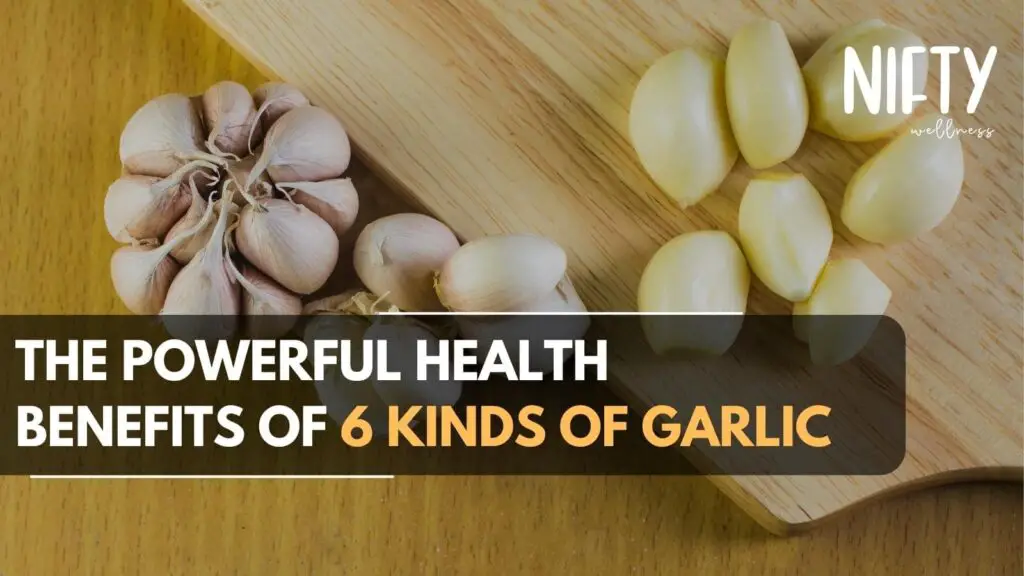Unless you’ve been living under a rock, you probably know what garlic is. And chances are, you might have used it in your culinary adventures dozens of times. But did you also know that besides it being an excellent flavor enhancer, garlic also boasts some pretty incredible health benefits?
Garlic, a kitchen staple and culinary hero, is more than just a flavour enhancer; it harbours a treasure trove of potent health benefits. Beyond its aromatic presence in countless dishes, garlic has been recognized for its potential to contribute to well-being in various ways. Delve into the realm of this pungent bulb as we explore the powerful health benefits offered by six different types of garlic. Unearth the diverse wonders that this humble kitchen ingredient holds for your overall health and vitality.
Keep reading to find out more!
What Is Garlic?
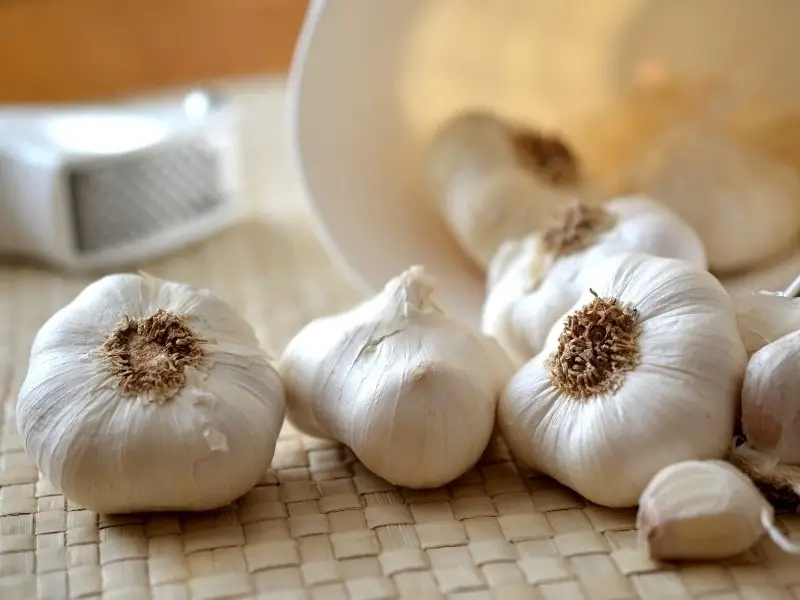
Garlic (Allium sativum) as we know it is a bulb out of which the perennial flowering plant grows. The bulb has thin outer layers that cover the cloves, and it usually contains 10 to 20 cloves.
It is difficult to say with certainty where it originated from because of its widespread cultivation, but it is thought to be native to Central Asia.
Fascinating Facts
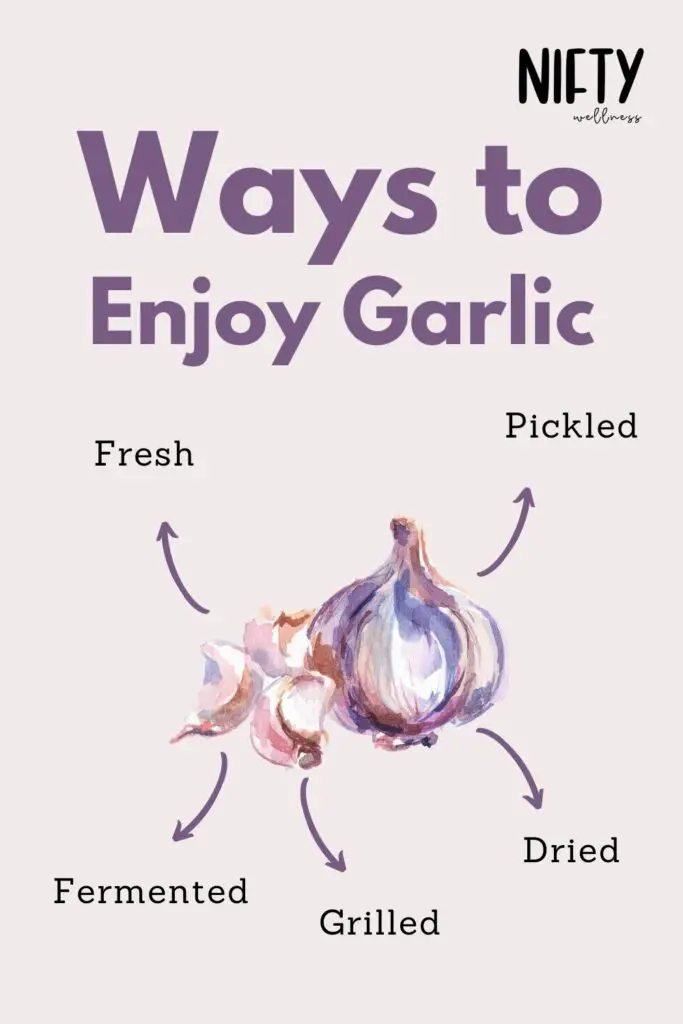
- Ancient Greeks used to include garlic in their offerings to the Greek goddess Hecate.
- Garlic was found in the tomb of Tutankhamun, which dates back to around 1325 BC.
- It used to be thought of as a cure-all remedy, with findings confirming it as early as the year 1025.
Garlic has been famous for its use in food flavoring and traditional medicine for many centuries. And you can prepare and consume garlic in many forms – fresh, pickled, fermented, dried, grilled. Take your pick!
While the preparation process might be a question of taste and preference, it can also make a significant change in its effects on your health.
And that’s exactly why we’ve prepared an overview for you to finally find out what types of garlic the world can offer us and what kind of difference its origin and preparation methods can make!
But first off, we’re going to start with investigating the possible benefits of fresh garlic.
Check out our blog 7 Proven Sake Health Benefits, Nutrition & Side Effects. Discover the art of well-being with our guide to sake health benefits.
Fresh Garlic Benefits
Research has confirmed that fresh garlic boasts a wide spectrum of benefits for our health. Fresh garlic is a potent natural remedy with many health benefits. Rich in allicin, its active compound, fresh garlic exhibits antimicrobial properties that may combat infections. Studies suggest its potential to lower blood pressure and cholesterol levels, promoting heart health.
Additionally, fresh garlic may bolster the immune system, aiding the body’s defense against illnesses. Incorporating this aromatic herb into your diet may offer a flavorful boost while contributing to your overall well-being.
Prevents Heart Disease
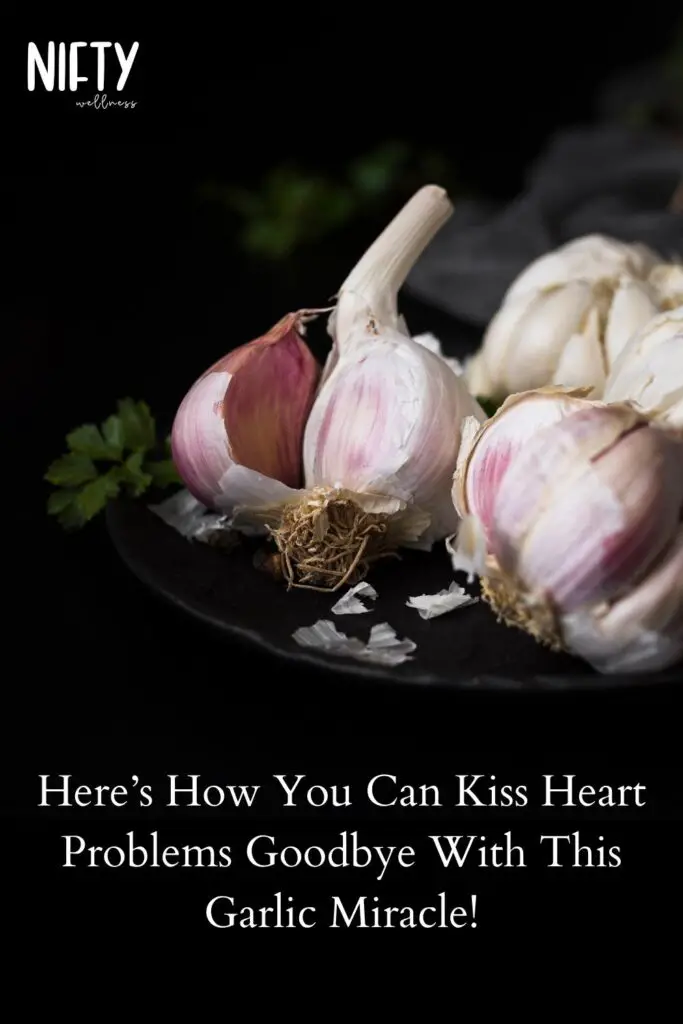
Garlic has gained popularity in the prevention and treatment of cardiovascular diseases. That’s because it can reduce blood pressure and cholesterol levels. In turn, this lowers the risk and expression of hypertension and heart diseases.
Reduces Inflammation
Garlic can be used to treat inflammation and inflammatory diseases, such as arthritis. That’s most likely due to its anti-inflammatory organosulfur compounds, such as allicin.
Diabetes
Allicin has shown the ability to reduce resistin, which is also known as insulin resistance. It can also reduce fructosamine and glycosylated hemoglobin, which means that garlic can effectively manage type 2 diabetes.
Antioxidant
Garlic is known to have strong antioxidant properties. It scavenges free radicals and helps protect from oxidative damage. If you want to reap more of those advantages, you should know that raw garlic has shown more potent antioxidant activity than cooked.
Fights Bacteria
Garlic has a vast array of antibacterial and antifungal properties.
It has been found that garlic oil can slow down the growth of bacteria such as Staphylococcus aureus, E. coli, and Bacillus subtilis, and fungus such as Penicillium funiculosum.
In addition to that, raw garlic restricts the activity of bacteria that causes infections in the stomach.
Boosts Immune system
Garlic contains plenty of bioactive compounds that are useful for the immune system, such as polysaccharides, which have demonstrated potent immunomodulatory effects.
Garlic extract was found to improve the immune system functions and reduce the frequency and severity of the common cold and flu.
Supports Digestive System
Garlic might be a valuable assistant in the treatment of conditions related to the digestive system.
It reduces the impact of gastric ulcers, gastric acid, and bacteria in the stomach.
Generally speaking, garlic can be an excellent natural remedy in the treatment of various gastrointestinal diseases.
Side Note
The benefits of garlic depend heavily on its varieties and processing methods. For example, regular garlic has been shown to have more effective properties in raw form than cooked.
And interestingly enough, fermented garlic has stronger antioxidant abilities than raw garlic. Intrigued yet? Well, let’s take a look at a few garlic varieties, preparation methods, and their benefits!
What Is Fermented Garlic

To put it simply, fermented garlic is fresh garlic that has gone through a fermentation process that involves salt, water, and oxygen. This process tones down the intense flavor that raw garlic is known for.
Apart from its milder flavor and softer consistency, fermented garlic is also thought to have quite a few benefits up its sleeve, and according to research, it is not a lie.
Fermented Garlic Benefits
Unlock the enhanced benefits of garlic through fermentation! Beyond its delicious taste, fermented garlic offers potential health advantages. From improving blood circulation to reducing the risk of fatty liver disease, this form of garlic can be a valuable addition to your wellness journey. Explore the specific benefits that fermented garlic brings to the table, making it a flavorful and nutritious choice for your overall health.
Improves Blood Circulation
Experience the amplified benefits of fermented garlic in promoting robust blood circulation. Not only does it prevent blood clot formation more effectively than raw garlic, but it also fosters optimal oxygen delivery to tissues through enhanced blood flow. Compared to raw garlic, fermented garlic has shown a stronger ability to help prevent blood clots from forming and therefore allow the tissues to receive oxygen through normal blood flow. Make fermented garlic a flavorful ally for cardiovascular well-being.
Reduces Risk Of Fatty Liver Disease
Delve into the impactful realm of fermented garlic as it showcases remarkable prowess in reducing liver weight and combating fat retention effects. Fermented garlic demonstrated more significant abilities to reduce liver weight and reduce the effects of fat retention in the liver. Elevate your liver health by incorporating this savoury addition, turning culinary choices into a proactive step against the risks of fatty liver disease.
Helps Prevent Heart Disease
Embark on a heart-healthy journey with fermented garlic. Its significant enhancement of lipid activity and reduction in triglyceride levels presents a delicious strategy for preventing heart diseases. Fermented garlic can significantly improve lipid activity and lower triglyceride levels, which is important because the accumulation of excess lipid and high triglyceride levels can lead to heart diseases. Embrace the savoury benefits to fortify your cardiovascular health and savour the goodness of a heart-conscious diet.
Increased Nutritional Value
Unlock the nutritional treasure trove of fermented garlic. Beyond its delectable taste, fermentation enriches nutrient content, ensuring your body absorbs these valuable elements more efficiently. The fermentation process may increase the nutrient content in garlic and makes it easier for the body to absorb it. Enjoy the enhanced nutritional profile, making fermented garlic a flavorful and nutritious ally in your overall health journey.
Bonus: How to Make Fermented Garlic
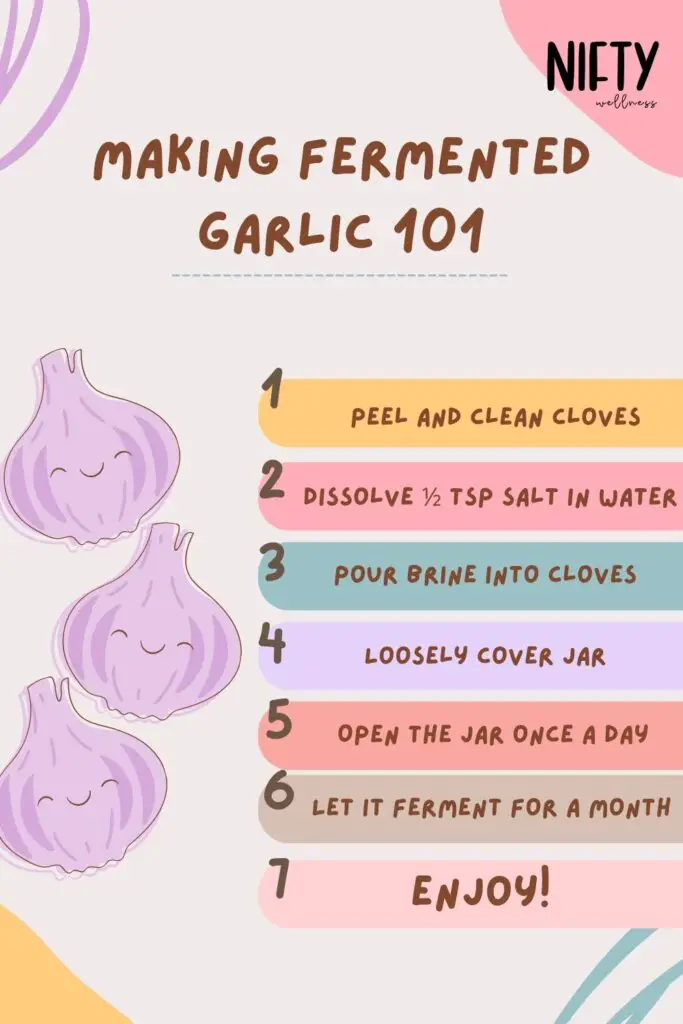
You will need:
- Garlic cloves
- Filtered water
- Non-iodized salt
Step-by-Step:
- Peel and clean as many cloves as you need to fill your jar, then place them inside.
- Dissolve half a teaspoon of salt per cup of water.
- Pour the brine into the jar and cover the cloves.
- Loosely place the lid on the jar.
- Put the jar anywhere that’s convenient for you (keep in mind that it will release a strong smell of garlic once the fermentation starts).
- Open the jar once a day to release the pressure caused by the fermentation process.
- Let it ferment for a minimum of one month (but we prefer two) at room temperature.
- Enjoy!
What Is Black Garlic

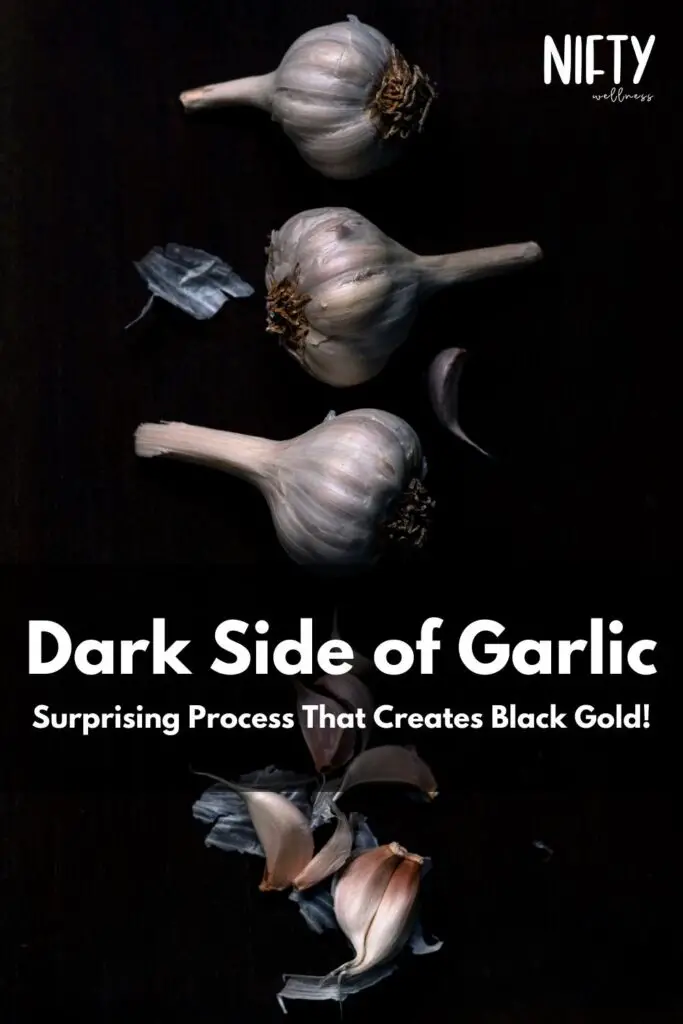
Black garlic is raw garlic that is treated with heat under controlled humidity for a certain period of time, usually more than one month.
Thermal processing is typically used to increase the sensory quality of foods, expand the variety of flavors, aromas, and textures, and form new biological compounds.
Black Garlic Benefits
According to research, black garlic retains all of its antioxidant capacity and nutrients.
In fact, studies showed that the treatment enhances the polyphenol and flavonoid content, with the highest antioxidant content being obtained on the 21st day of processing.
As a result, black garlic is very similar to regular garlic yet brings additional health benefits such as:
- Relaxing coronary arteries and improving the heart’s ability to contract its muscles.
- Preventing atherosclerosis through reduction of reactive protein levels.
- Stronger effects on the metabolism of lipids, cholesterol, and triglycerides.
What Is Pickled Garlic
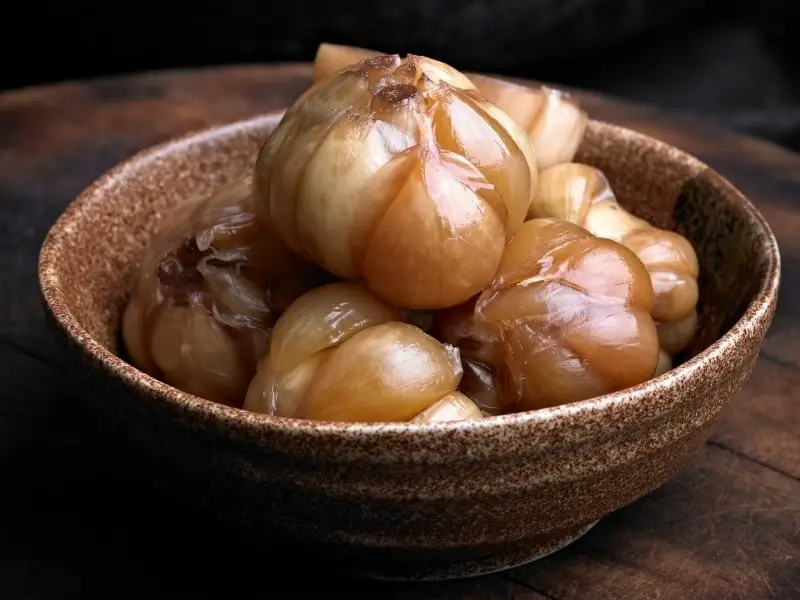
Pickled garlic is raw garlic that is processed in vinegar, herbs, salt, and often dried chili flakes. It is like garlic’s vibrant alter ego, soaking up a mix of vinegar, herbs, salt, and a touch of dried chili flakes. It undergoes a flavorful metamorphosis, marrying the boldness of garlic with the tangy goodness of pickles. This concoction is a delightful revelation if you’re a garlic enthusiast with a penchant for pickles.
Let’s put it this way, if you love garlic and pickles – pickled garlic will be your new favorite!
Pickled Garlic Benefits

When it comes to benefits, pickled garlic still preserves all of its useful components, and according to research, vinegar might add a couple to the list:
- As vinegar is known to be a source of polyphenols, it might multiply the antioxidant effects of garlic.
- Adding vinegar or pickled foods to meals may decrease the glycemic index of the food. It can reduce blood glucose concentrations and might increase short-term satiety. This can be beneficial for those with diabetes and healthy individuals, too.
Bonus: How to Make Pickled Garlic
Quantity: 500 ml jar
You will need:
- 1 tsp non-iodized salt
- 500 ml white vinegar
- 3 bulbs of fresh garlic cloves, peeled
- 1 head fresh dill
- 1/2 tsp dried chilli fakes
Step-by-Step:
- Mix salt and vinegar in a saucepan, bring it to boil, and let it simmer for 10 minutes.
- Place the garlic cloves in the jar and add dried chili flakes and fresh dill.
- Pour the hot pickling liquid in the jar, leaving 1/2 inch of headspace.
- Seal the jar and leave it to cool down overnight, then refrigerate.
- Keep in the refrigerator for at least 3 weeks.
Note: Keep in mind that it should be kept sealed tight in the refrigerator at all times because it is not shelf-stable and is not suitable for canning.
What Is Chinese Garlic
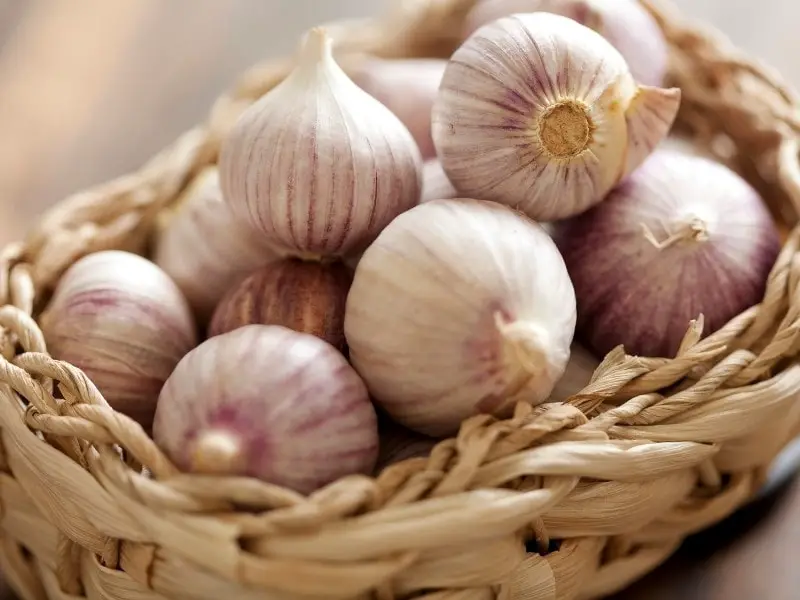
First of all, let’s start by saying that Chinese garlic is basically the same as most garlic that we can find in the shop. The flavor and the benefits are all still there when it comes to natural Chinese garlic.
The Chinese recognized the powerful antibiotic effects of garlic since ancient times and used it in traditional medicine to cure an upset stomach and diarrhea, reduce the risk of cancer, and improve heart health and immunity, among many other therapeutic uses.
Not many people know that China provides 80% of the world’s garlic, and its exportation is very significant to the garlic industry. However, this has also raised some health concerns.
Chinese Garlic Benefits
Chinese garlic, renowned for its distinct taste, holds a treasure trove of health benefits. Packed with allicin, a potent compound with antibacterial and antifungal properties, Chinese garlic is a formidable ally against infections. Studies suggest that it may aid in reducing cholesterol levels and promoting heart health. Additionally, it contains antioxidants that combat oxidative stress, contributing to overall well-being. The unique flavour of Chinese garlic elevates culinary experiences and brings a host of nutritional advantages to the table.
Rich in Allicin
With its potent allicin content, Chinese garlic provides antibacterial and antifungal properties and contributes to the robust flavour of your favourite dishes. Its distinctive aroma and taste elevate the culinary experience, making it a versatile and flavorful addition to various cuisines.
Heart Health
Research suggests that consuming Chinese garlic may lower cholesterol levels and play a role in maintaining cardiovascular well-being, offering a heart-healthy addition to your meals. Incorporate Chinese garlic into your diet to enhance heart health while enjoying its savoury taste in different recipes.
Antioxidant Properties
Beyond its distinctive taste, Chinese garlic brings antioxidant benefits, helping your body combat oxidative stress and supporting overall health. With its rich antioxidant profile, Chinese garlic contributes to your well-being and adds a flavorful twist to your meals.
Distinct Flavour
Besides its health advantages, Chinese garlic’s unique and robust flavour enhances the culinary experience, making it a versatile and delicious ingredient for various cuisines. Elevate the taste of your dishes by incorporating Chinese garlic, turning ordinary meals into extraordinary culinary delights.
Chinese Garlic Safety Concerns
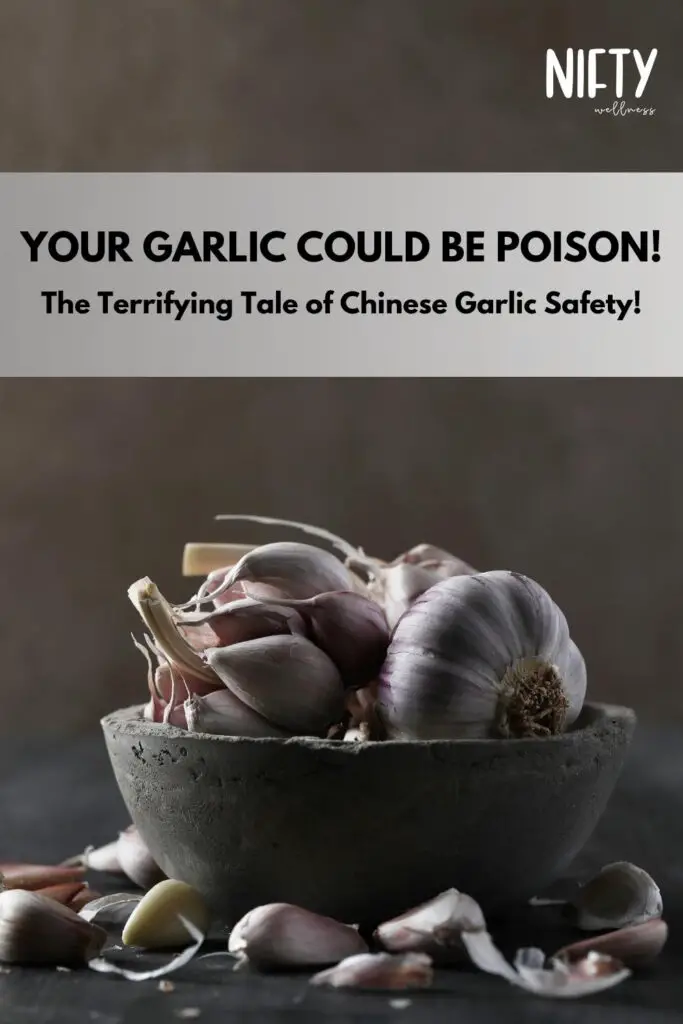
Unfortunately, apart from the benefits mentioned above, there are also some health and safety concerns regarding garlic imported from China.
Most of us already know that the majority of imported vegetables sold in supermarkets have gone through multiple treatment processes that involve chemicals. And sadly, Chinese garlic is no exception.
Allegedly, China is not particularly strict with safety regulations. There have been various reports of garlic being fumigated in pesticides, bleached in chlorine to remove spots, and grown in sewage water.
Naturally, this has encouraged people to look for local and more organic garlic produce.
Read our blog 10 Pine Pollen Benefits, Side Effects & Tincture Benefits. From immune support to increased energy, discover the natural wonders that await you.
What Is Elephant Garlic
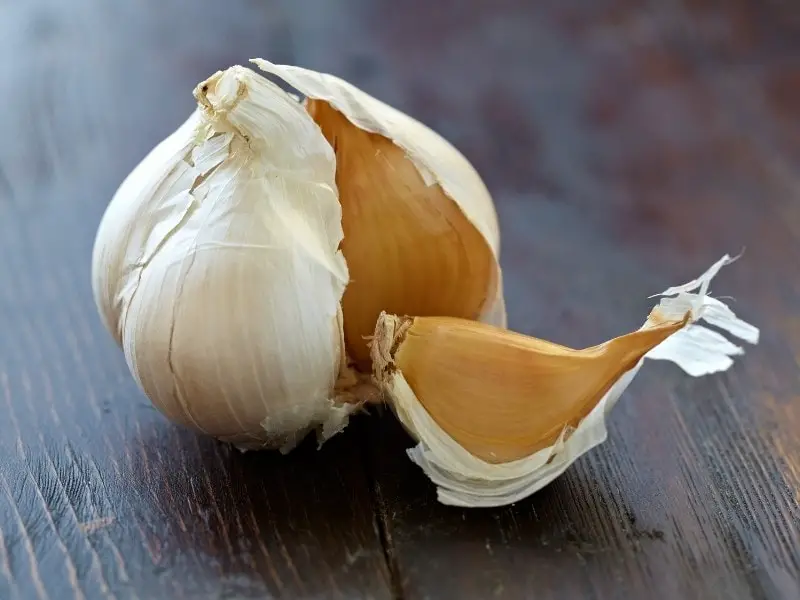
Although elephant garlic belongs to the allium genus, it’s not garlic, it actually belongs to the same species as leeks.
Its flavor is milder than regular garlic, which makes it a great option for salad in its raw form. And elephant garlic contains a lot of moisture, so if you’re after a fuller flavor, you can dry it in the basement for a couple of months.
Known for its milder flavor than traditional garlic, elephant garlic is an excellent choice for raw salads. If you prefer a more robust taste, you can enhance its flavor by drying it in a cool, dry place like your basement for a few months.
Elephant Garlic Benefits
Research confirms that elephant garlic has demonstrated some health benefits, such as:
- Powerful antimicrobial impact on bacteria such as E. Coli, Bacillus Subtilise, and Staphylococcus aureus, with stronger effects than penicillin antibiotic.
- Anticancer effects through the reduction of growth and spread of cancerous cells.
- Elephant garlic exhibits potent antioxidant properties, which may contribute to neutralizing free radicals in the body and supporting overall health.
Garlic And Honey Benefits
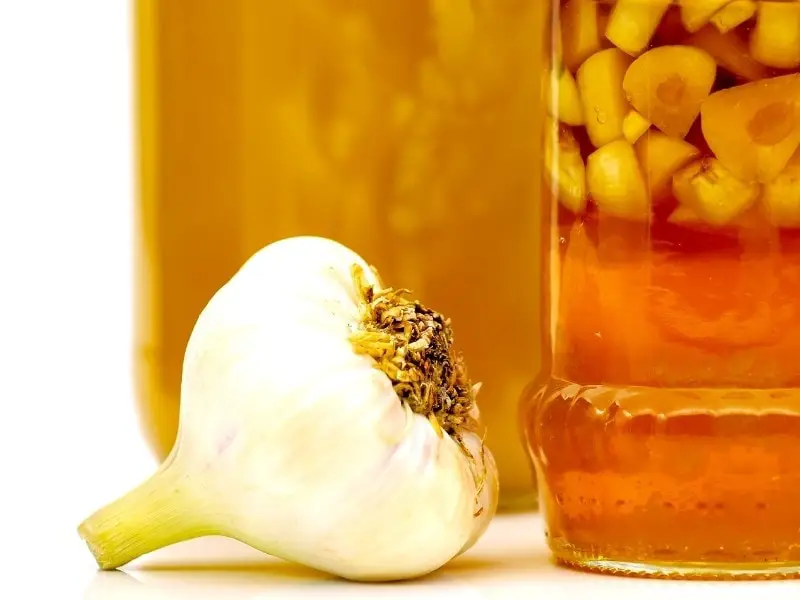
Garlic and honey both have many proven health benefits on their own. Some people swear by garlic and honey mixtures, and there are various ways you can use them together.
You can add them into a salad dressing, ferment garlic in honey, or make a marinade to flavor your meat, fish, and vegetables!
- Honey and garlic might fight bacterial infections, and they are widely known for their antimicrobial properties, especially when used against antibiotic-resistant bacteria. And research has demonstrated that garlic and honey had significantly stronger effects as a mixture than alone.
- Other potential benefits may include wound healing, treatment of colds and viruses, improvement of memory, and heart health. However, more research needs to be done on honey and garlic together to confirm these potential effects.
Conclusion
Garlic has been consumed all over the world for many generations and was always believed to be an effective natural remedy. And as we can see, the benefits of garlic are undeniable and it has rightfully earned its popularity!
So, did we inspire you to try a new kind of garlic? Let us know which one in the comments below! And if you’re looking for another healthy culinary additive, check out our article about bamboo.
Frequently Asked Questions (FAQs)
Can garlic really help lower blood pressure?
Yes, garlic has been linked to potential blood pressure-lowering effects. Allicin, a compound in garlic, is believed to relax blood vessels and improve blood flow, contributing to lower blood pressure. While more research is needed for conclusive evidence, incorporating garlic into a balanced diet may offer cardiovascular benefits. If you have hypertension, consult your healthcare provider for personalized advice on managing blood pressure.
What is allicin, and why is it important?
Allicin is a bioactive compound in garlic known for its health benefits. When garlic is crushed or chopped, the enzyme alliinase acts on alliin, converting it into allicin. This compound has antimicrobial, antioxidant, and potential cardiovascular benefits. Allicin is considered a key player in garlic’s therapeutic properties, contributing to its reputation as a natural remedy for various health issues.
What amount of garlic is recommended for obtaining its health advantages?
To reap health benefits from garlic, consuming one to two cloves per day is a common recommendation. This amount provides a sufficient intake of allicin and other beneficial compounds. However, individual tolerance may vary, and it’s essential to consider factors like personal health conditions and potential interactions with medications. Consulting with a healthcare professional can help determine an appropriate and safe amount for your specific needs.
Are there any side effects to consuming garlic?
While garlic is generally safe, some people may experience side effects such as heartburn, upset stomach, or allergic reactions. Raw garlic, especially in large amounts, may cause digestive discomfort. Additionally, garlic can thin the blood, so individuals on blood-thinning medications should exercise caution. Consultation with a healthcare professional is advisable, especially for those with underlying health conditions or taking specific medications.
Can garlic really boost the immune system?
Yes, garlic has immune-boosting properties. It contains allicin, a compound known for its antimicrobial and antioxidant effects. These properties may enhance the immune system’s ability to fight infections and protect against illnesses. Adding garlic to a well-rounded diet may enhance overall immune system well-being. However, it’s essential to maintain a varied and nutritious diet for comprehensive immune support.
